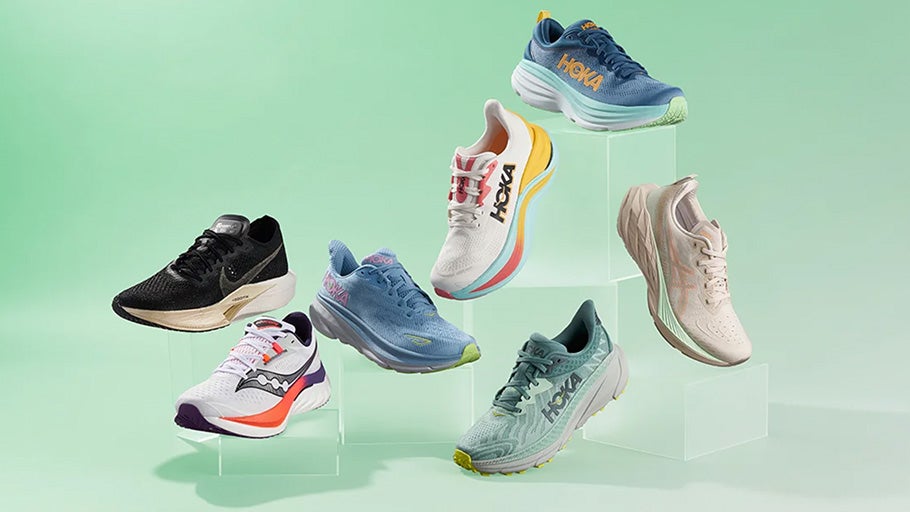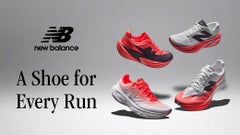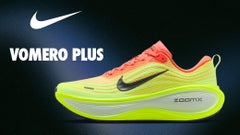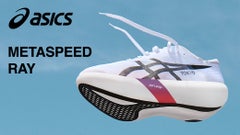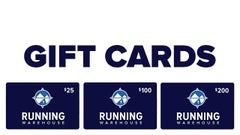
How to Identify if You Need a Wide Width Shoe
When it comes to running, finding a comfortable shoe is essential, and a key factor is how well the shoe fits. A good fit means that your feet will feel right at home as soon as you slip your shoes on, remaining comfortable for your entire run. An improper fit can lead to discomfort, pain, blisters, bunions, and even injuries.
If your shoes put too much pressure on the sides of your feet or your toes feel crammed in the toe box, wide-width shoes may be the solution. Determining the right width for your shoes is an important step toward making each run more enjoyable. Even small differences in width can make a big difference in comfort and performance!
Signs You May Need a Wide Width Running Shoe
All running shoes are different, and sometimes the standard width just isn’t enough for your feet. Wearing shoes that are too narrow can make running a pain, causing blisters, discomfort or foot fatigue. You may benefit from a wide-width running shoe if you notice any of the following:
- Your toes feel bunched together or overlap in the toe box.
- Blisters form on the outside of your big toe and/or on the outside of your pinky toe.
- Numbness or tingling sensations in the feet.
- Your foot spills over the side(s) of your shoe.
- You have existing foot conditions like bunions, hammertoes, or Morton's neuroma.
- Something just doesn't feel right in the toe box despite having enough room (length wise).
How Are Shoe Width Sizes Labeled?
In the shoe industry, a numbering system is used to identify the length size of a shoe, whereas an alphabetical system is used for the width of a shoe. While there is a wide range (pun intended) of width sizing in the shoe world, our focus will be on the width sizes that are common in the running industry and the ones we carry here at Running Warehouse.
| MEN'S | WOMEN'S |
| B = Narrow | 2A = Narrow |
| D = Medium | B = Medium |
| 2E = Wide Width | D = Wide |
| 4E = Extra Wide Width | 2E = Extra Wide |
Standard Width:
Standard shoe width is a "D" for Men and a "B" for Women.
Regular vs. Wide-Width Shoes
Wide shoes feature increased forefoot width and deeper toe boxes. This extra space helps reduce pressure on the foot, improve comfort, and prevent common issues like corns and blisters.
While shoe width increments aren’t perfectly standardized across brands, a common guideline is that:
- Moving from a standard width (Men’s D / Women’s B) to a wide width (Men’s 2E / Women’s D) adds about ¼ inch (≈6 mm) across the ball of the foot.
- Moving to an extra-wide width: (Men’s 4E / Women’s 2E) adds roughly another ¼ inch.
Can I Size Up Instead of Getting a Wide Shoe?
It’s a common misconception that buying a longer shoe solves width issues. This approach almost always just adds extra length rather than truly improving fit. A shoe that is too long can cause heel slipping, blisters, and poor foot alignment while still leaving the forefoot cramped.
True wide-width shoes provide extra space where it’s needed most, across the ball of the foot, without compromising overall fit or stability.
Can Foot Width Be Measured?
Yes! A Brannock device, commonly found in shoe stores, measures both foot length and width. You can also trace your foot at home and measure the widest part of your forefoot with a ruler. Compare your measurement to our width charts to determine if a wide width might be necessary.
Keep in mind that measurements are only a starting point. Not all shoes fit the same, even if they have the same length and width. Your feet may feel more comfortable in some brands or models than others. Let your comfort guide your decisions, not just measurements, social media, or appearances.
Do All Shoes Come In Wide Width Sizes?
Unfortunately, no. Not all brands offer wide-width shoes, and even those that do may not provide them for every model. Additionally, width sizing can vary between brands and models, meaning what is considered wide in one brand may be different in another. For example, some HOKA models, such as the Clifton and Bondi, tend to run narrow, so even a wide width may feel tight for some runners.
We recommend trying a few options to ensure you find the shoe that provides the best fit for you. Comfort is personal, and the right shoe can make all the difference in your running experience!
Run Better with Wide-Width Shoes
Wide-width shoes provide extra space for runners who need it, increasing comfort, preventing blisters and injuries, as well as supporting a natural stride. Each runner’s feet are unique, and finding shoes that work best for you as an individual can make all the difference.
Take the time to measure your feet, try on different brands and models, and trust what feels best. With the correct fit, you can run farther, more comfortably, and enjoy every step. At Running Warehouse, our selection of wide-width running shoes and free returns make it easy to find the shoes that fit your feet perfectly — because when your shoes fit right, every run feels better.
Related Articles

